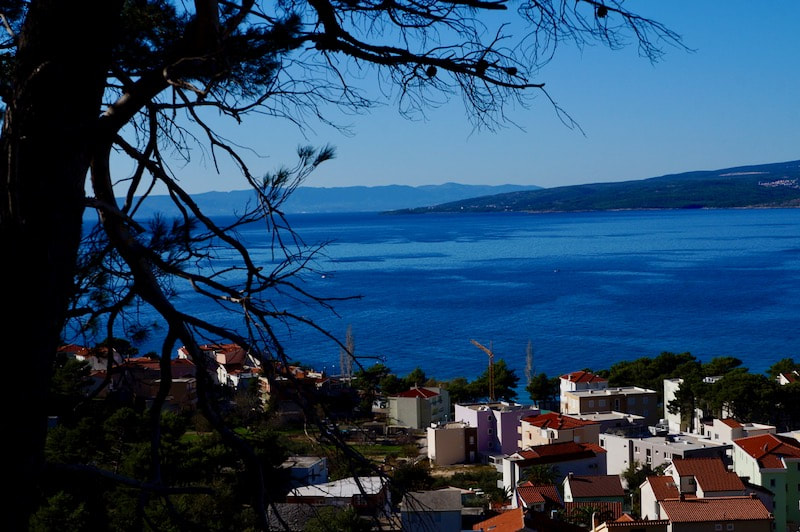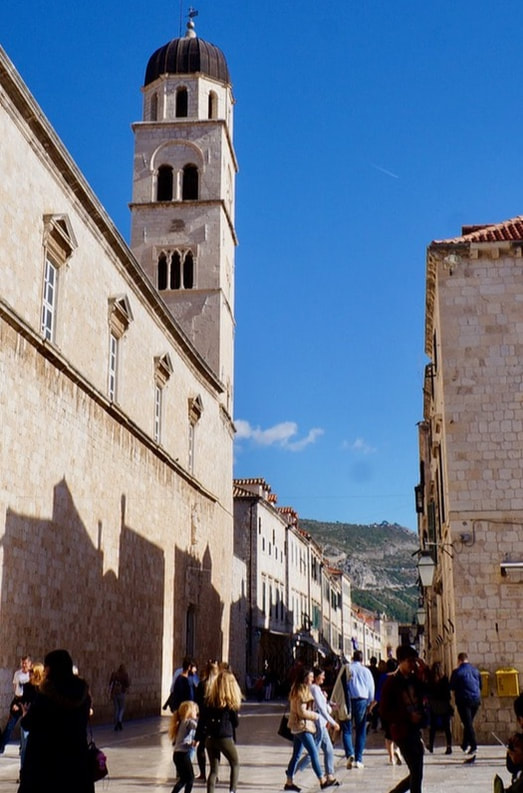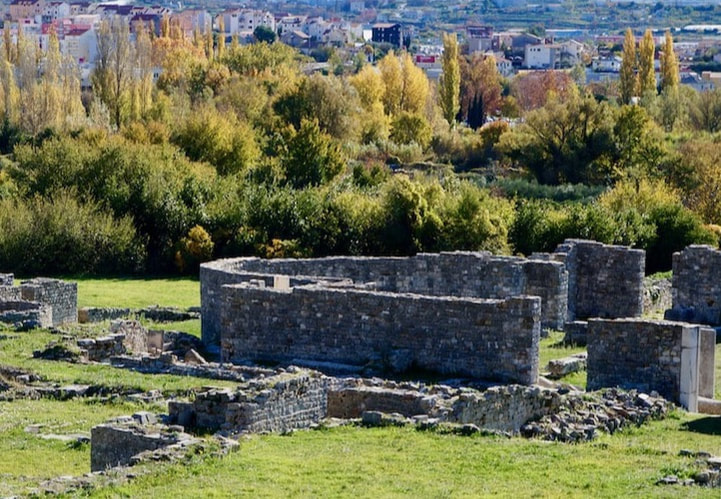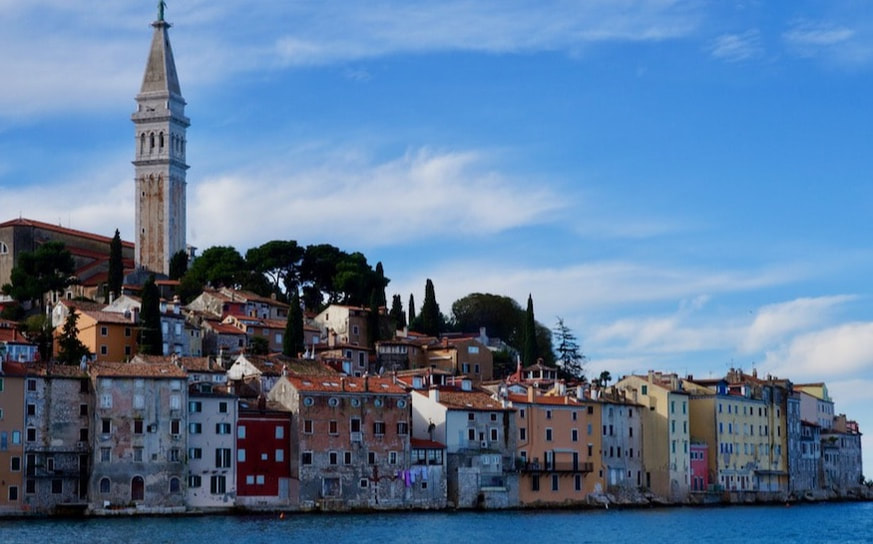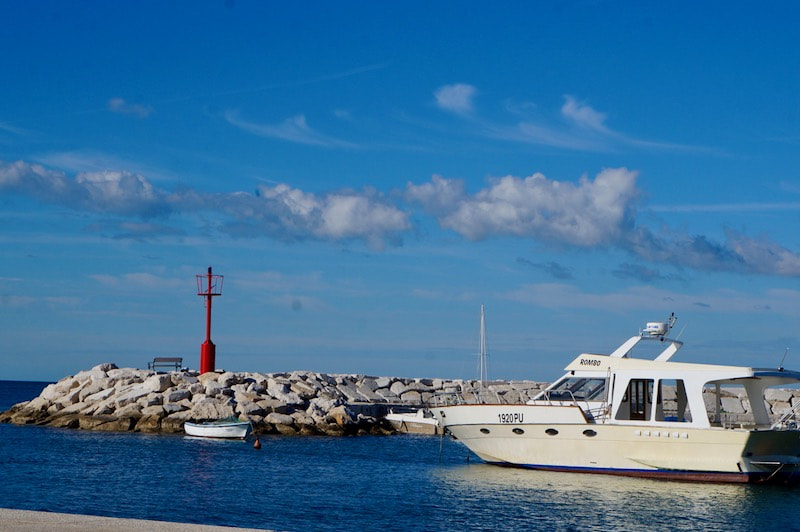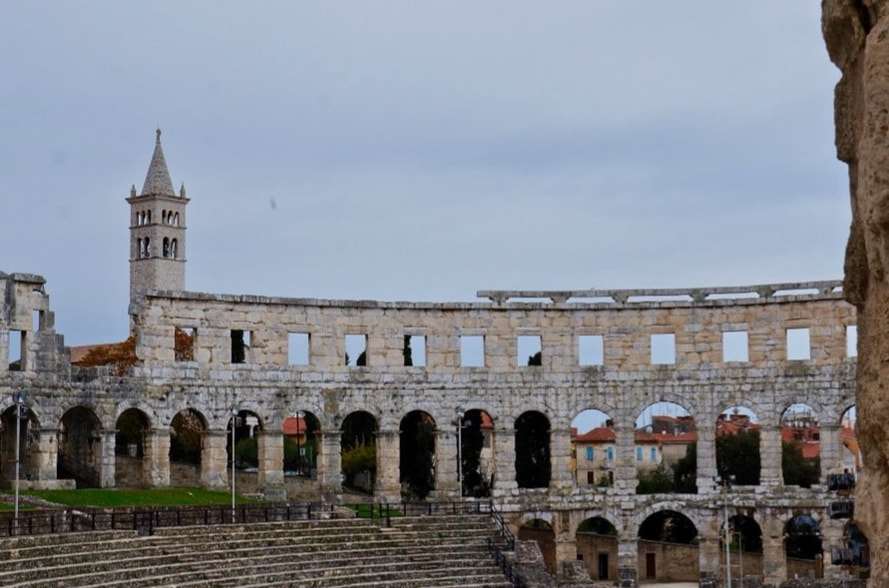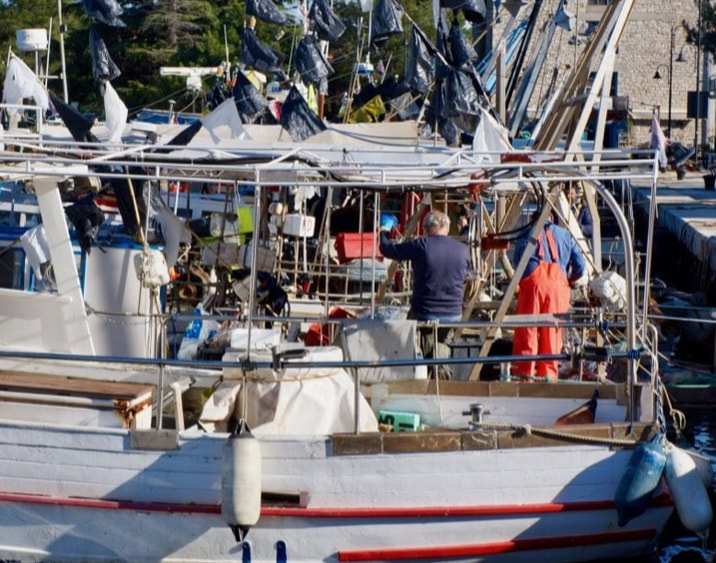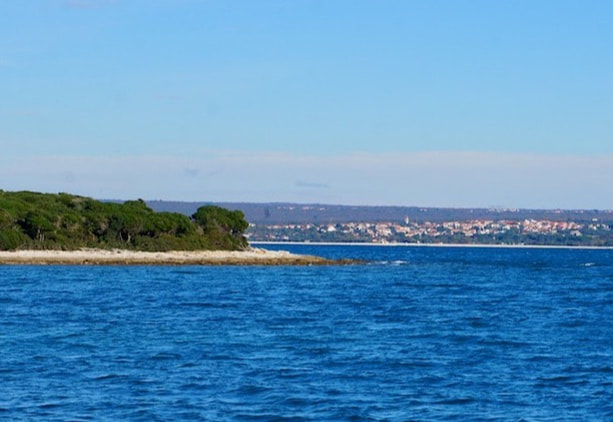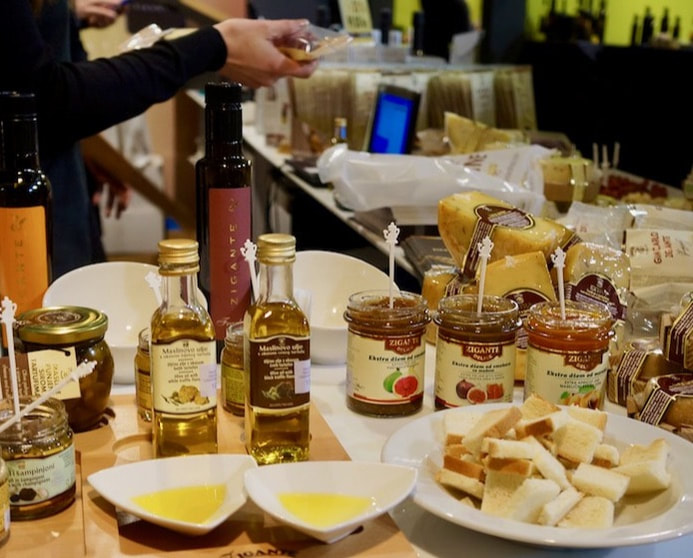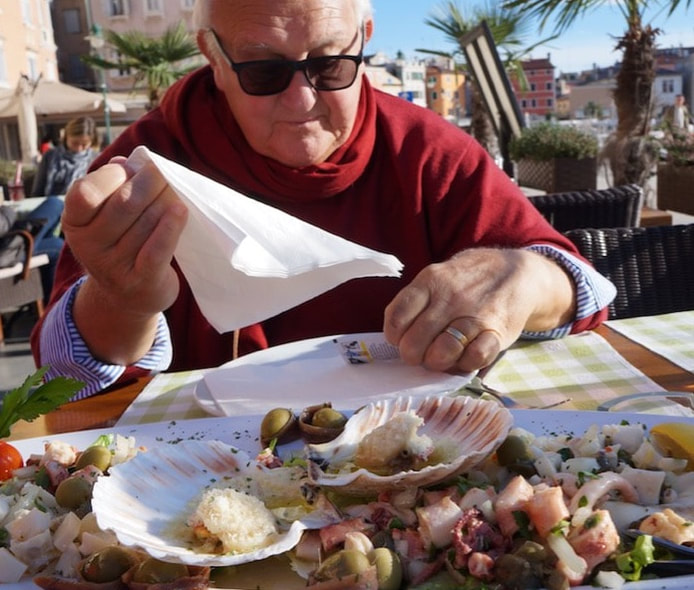10 Best Places to Visit in Croatia
In Southeast Asia, the ten best in almost any country stay the same 12 months a year but in a swing climate such as you have along the Adriatic, the ten best in Croatia will depend on the time of year you visit.
Sunbathing in Hvar in July may be excellent, but it is a refrigerator two months later. In November, you can still visit Brijuni Islands (picture below) in Istria, but many places close down at the end of November.
In Croatia, even in the Winter, there are still many places to visit.
Sunbathing in Hvar in July may be excellent, but it is a refrigerator two months later. In November, you can still visit Brijuni Islands (picture below) in Istria, but many places close down at the end of November.
In Croatia, even in the Winter, there are still many places to visit.
We went to Croatia in November and did not run out of places to explore in the 20 days we were there.
Dubrovnik is stunning as an archaeological statement 12 months a year. So is Split and its neighbor Solin.
The remnants of past civilizations that all contributed to what the world is today can be seen live in and celebrated in Croatia with a great local wine glass.
But again, I can name twenty other places that will beat the ten I have here. For now, though, enjoy and know these places a bit more.
Dubrovnik is stunning as an archaeological statement 12 months a year. So is Split and its neighbor Solin.
The remnants of past civilizations that all contributed to what the world is today can be seen live in and celebrated in Croatia with a great local wine glass.
But again, I can name twenty other places that will beat the ten I have here. For now, though, enjoy and know these places a bit more.
1. Dubrovnik
This historic walled section of town paved with limestone offers medieval churches, museums, restaurants, palaces, and so many other engaging features that you can explore. However, in your exploration, don't miss the Franciscan Monastery.
Although the main draw in the monastery is the old Apothecary, which is still a working pharmacy today, the Monastery parts are just as absorbing. After watching the old pharmacy still dispensing today, roam the monastery corridors and look up at the paintings to get a sense of how the monks lived at that time.
Enjoy the old market of Gunduliceva Poljana, buy fresh fruits, and sample some of the Croatian sweets. As you let your smell guide you, you'll find the Fish Market, and right beside it is the restaurant, Nostromo. Go in there if you are a fish and seafood lover, and you will not regret it. The locals recommend it.
Walk the walls, especially during sunset, to be entranced by the dramatic views of the city.
Close by are some fascinating islands; surprisingly, there are still tours that go to these islands. As long as you keep yourself warm, the trips are fun. There are also villages, including Cavtat, where you can eat al fresco, watching the sea tells its story of the day. Or, drive through Konavale and see the charming village and its agricultural charm.
This historic walled section of town paved with limestone offers medieval churches, museums, restaurants, palaces, and so many other engaging features that you can explore. However, in your exploration, don't miss the Franciscan Monastery.
Although the main draw in the monastery is the old Apothecary, which is still a working pharmacy today, the Monastery parts are just as absorbing. After watching the old pharmacy still dispensing today, roam the monastery corridors and look up at the paintings to get a sense of how the monks lived at that time.
Enjoy the old market of Gunduliceva Poljana, buy fresh fruits, and sample some of the Croatian sweets. As you let your smell guide you, you'll find the Fish Market, and right beside it is the restaurant, Nostromo. Go in there if you are a fish and seafood lover, and you will not regret it. The locals recommend it.
Walk the walls, especially during sunset, to be entranced by the dramatic views of the city.
Close by are some fascinating islands; surprisingly, there are still tours that go to these islands. As long as you keep yourself warm, the trips are fun. There are also villages, including Cavtat, where you can eat al fresco, watching the sea tells its story of the day. Or, drive through Konavale and see the charming village and its agricultural charm.
2. Split
Diocletian has built a Palace and a garrison that now serves as the Old Town of Split. This fortified area includes churches, restaurants, museums, apartments, hotels, and shops. Go under the cellars and have a tour of the ruins of the Palace.
Diocletian has built a Palace and a garrison that now serves as the Old Town of Split. This fortified area includes churches, restaurants, museums, apartments, hotels, and shops. Go under the cellars and have a tour of the ruins of the Palace.
The Cathedral was originally the tomb of Diocletian. This tomb did not survive the demolition, and they built a vast basilica on it.
As you enjoy looking at some of the valuable features of the Palace, listen to beautiful singing. The Dalmatian Klapa uses the Dome of the Palace's acoustics and sings some traditional Dalmatian songs. Not only is it worth listening to, but it is also even more engaging to join in.
As you enjoy looking at some of the valuable features of the Palace, listen to beautiful singing. The Dalmatian Klapa uses the Dome of the Palace's acoustics and sings some traditional Dalmatian songs. Not only is it worth listening to, but it is also even more engaging to join in.
3. Solin
A short drive from Split, history buffs will enjoy exploring this place. You can also take the bus, and here's the site for timetables: BusCroatia.
Solin is the oldest Roman settlement though this was already an established community even before the Romans. It was here that the Romans martyred the early Christians.
The Roman remains include a theatre, basilicas, and other things in a Roman city of quite an importance.
A short drive from Split, history buffs will enjoy exploring this place. You can also take the bus, and here's the site for timetables: BusCroatia.
Solin is the oldest Roman settlement though this was already an established community even before the Romans. It was here that the Romans martyred the early Christians.
The Roman remains include a theatre, basilicas, and other things in a Roman city of quite an importance.
The coastal highway from Split up to Rovinj is in excellent shape and is an incredible drive. The endless views keep unfolding, and it is a memory you will keep for a long time. I'd vote for it over some of the California coastal drives but make sure there is no Bora when you drive through it. This wind can be powerful and intimidating.
4. Rovinj
Rovinj is like Venice, but you can take a day trip from here if you like the real Venice. It's a coastal city that is ready to be enjoyed. Parking is so easy and inexpensive.
The fresh market is close to the parking, where you can get the obligatory truffles, olive oil, fresh fish, and produce. Walk-on and the squares by the water have many cafes and restaurants where you can partake of the best seafood and other area specialties.
You can climb up the hill where the Cathedral is and pay homage to the body of St. Euphemia. On climbing up, look at some medieval houses and their features. They are lovely. But when you come down, sit in one of the alfresco restaurants facing the ocean and enjoy it.
Rovinj is like Venice, but you can take a day trip from here if you like the real Venice. It's a coastal city that is ready to be enjoyed. Parking is so easy and inexpensive.
The fresh market is close to the parking, where you can get the obligatory truffles, olive oil, fresh fish, and produce. Walk-on and the squares by the water have many cafes and restaurants where you can partake of the best seafood and other area specialties.
You can climb up the hill where the Cathedral is and pay homage to the body of St. Euphemia. On climbing up, look at some medieval houses and their features. They are lovely. But when you come down, sit in one of the alfresco restaurants facing the ocean and enjoy it.
In the summer, most of the coastline is a beach. It's an easy drive for most Europeans, and the Adriatic is beautiful, warm, and straightforward. Viewing that sea from the mountains is equal to the Amalfi Coast. Rovinj and Pula are all coastal cities and the most popular of the other smaller ones worth visiting.
5. Pula
Pula was a major surprise for us when we arrived there. We have seen many Roman ruins but did not know how grand this amphitheater was in the middle of the city. There are Roman ruins to explore in the area, and the tiny coastal villages await after you've done this.
Pula was a major surprise for us when we arrived there. We have seen many Roman ruins but did not know how grand this amphitheater was in the middle of the city. There are Roman ruins to explore in the area, and the tiny coastal villages await after you've done this.
Bizarre and neighboring fishing villages in the north are a wonder in the Spring and the Fall but a zoo in the tourist season. As there were only a few tourists in November, we enjoyed walking its seaside and talking to some fishermen.
Drive through Vsar, Umag, Porec, and Savudria. The seaside stroll is the most enjoyable for us.
Drive through Vsar, Umag, Porec, and Savudria. The seaside stroll is the most enjoyable for us.
6. Fanzana/Brijuni
Nothing like the small coastal towns of Istria will draw you to this country. Even in November, you can enjoy the sun and the alfresco cafes and restaurants in these towns. Fanzana is a sunny little town with the islands of Brijuni a small distance from its shores.
This national park was the first agreement of the non-aligned nations under Yugoslavia's leader, Tito, and Egypt's leader, Nasser. Today, it has a hotel, a golf course, a safari, and a train that brings visitors around.
We even had a good boat trip to Brijuni Islands with a guide. But the crowning glory of this trip to Istria is the Olive Festival in Vodjnan.
Nothing like the small coastal towns of Istria will draw you to this country. Even in November, you can enjoy the sun and the alfresco cafes and restaurants in these towns. Fanzana is a sunny little town with the islands of Brijuni a small distance from its shores.
This national park was the first agreement of the non-aligned nations under Yugoslavia's leader, Tito, and Egypt's leader, Nasser. Today, it has a hotel, a golf course, a safari, and a train that brings visitors around.
We even had a good boat trip to Brijuni Islands with a guide. But the crowning glory of this trip to Istria is the Olive Festival in Vodjnan.
7. Vodnjan
We were lucky that our guide mentioned this, so from Fanzana, we drove straight to Vodjnan. We enjoyed tasting the various olive oils, truffles, white and black, marinated in different olive oils, wines, meats, cheese, and other delicacies of Istria. Know the dates of this festival next year and don't miss it.
Motovun and Buzet's towns are close by, and there you can join the search for the most valued truffles and enjoy dishes with the best olive oil and truffles.
We were lucky that our guide mentioned this, so from Fanzana, we drove straight to Vodjnan. We enjoyed tasting the various olive oils, truffles, white and black, marinated in different olive oils, wines, meats, cheese, and other delicacies of Istria. Know the dates of this festival next year and don't miss it.
Motovun and Buzet's towns are close by, and there you can join the search for the most valued truffles and enjoy dishes with the best olive oil and truffles.
Where is Vodnjan?
8. Peljisac Peninsula and Ston
For the wine connoisseurs, this is the place to visit. There are wineries from where you can sample some of Croatia's best wines.
Coming back from Istria and Split, enhance the drive to Dubrovnik with a stop at this walled city of Ston, where you can sample the best oysters we've ever tasted. It tastes like the sea, and that's all you need. They have some of the best salts ever produced the same way they did centuries ago.
There are tours from Dubrovnik, which you can easily arrange with the many tour operators, some even with kiosks right in the Pile Gate of the walled city.
For the wine connoisseurs, this is the place to visit. There are wineries from where you can sample some of Croatia's best wines.
Coming back from Istria and Split, enhance the drive to Dubrovnik with a stop at this walled city of Ston, where you can sample the best oysters we've ever tasted. It tastes like the sea, and that's all you need. They have some of the best salts ever produced the same way they did centuries ago.
There are tours from Dubrovnik, which you can easily arrange with the many tour operators, some even with kiosks right in the Pile Gate of the walled city.
9. Korcula
About 67 km from Ston, this old city is said to be the birthplace of Marco Polo and is an attractive place to visit. Add to this its vineyards and olive groves, and the island is a great day trip from Dubrovnik.
About 67 km from Ston, this old city is said to be the birthplace of Marco Polo and is an attractive place to visit. Add to this its vineyards and olive groves, and the island is a great day trip from Dubrovnik.
10. Plitvice
A 295-sq.-km forest reserve in central Croatia has terraced lakes and waterfalls extending into a limestone canyon. The drive through the mountains is breathtaking, and, in November, there can be snow enhancing the beauty of this park.
A 295-sq.-km forest reserve in central Croatia has terraced lakes and waterfalls extending into a limestone canyon. The drive through the mountains is breathtaking, and, in November, there can be snow enhancing the beauty of this park.
Here's a bonus. Find a restaurant near a fishing port and order a seafood platter. Amazing! From the boat to the chef, your plate with a freshness you may never have experienced. Montalbano would have wept.
Other interesting articles on Croatia:
